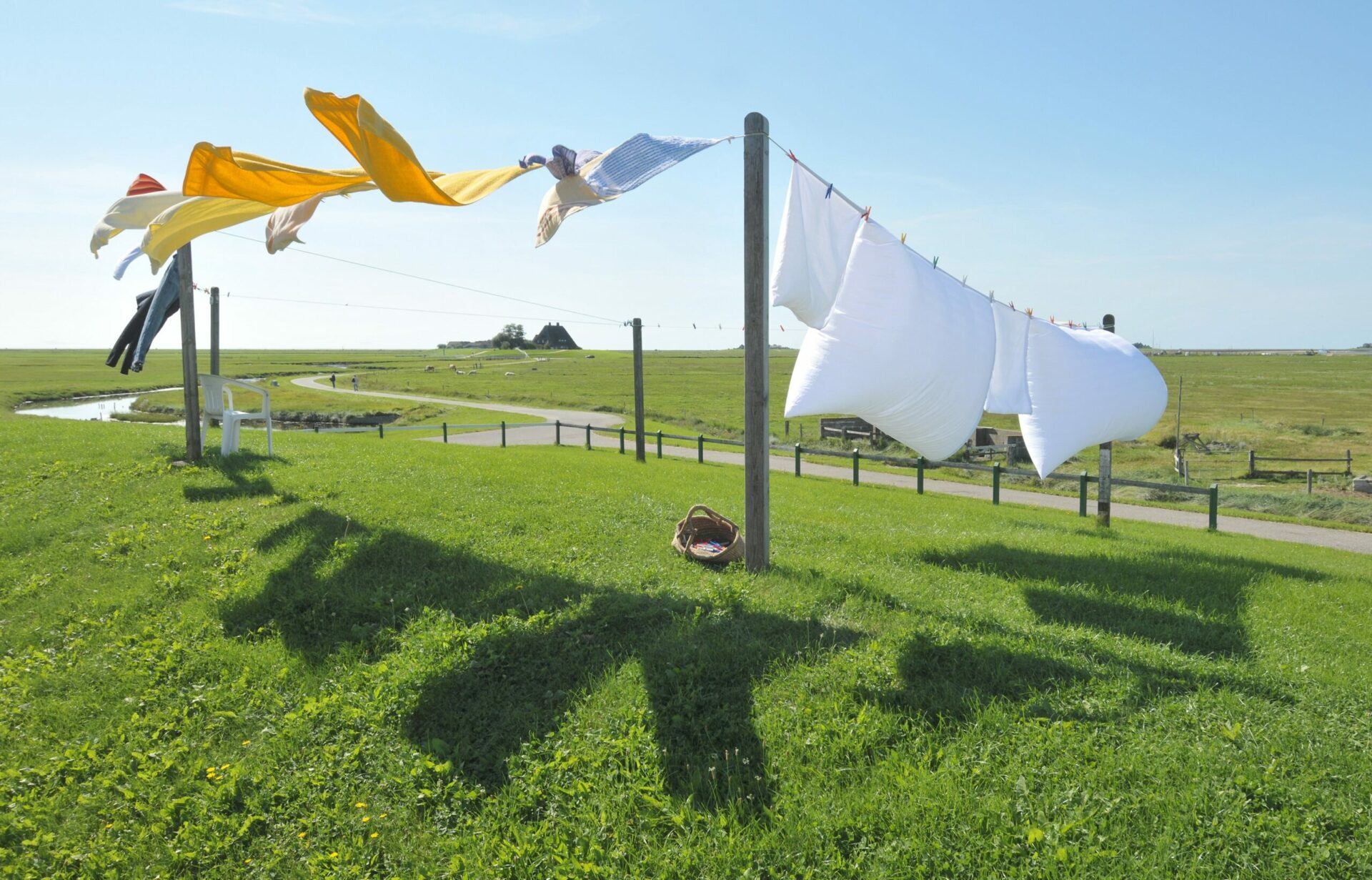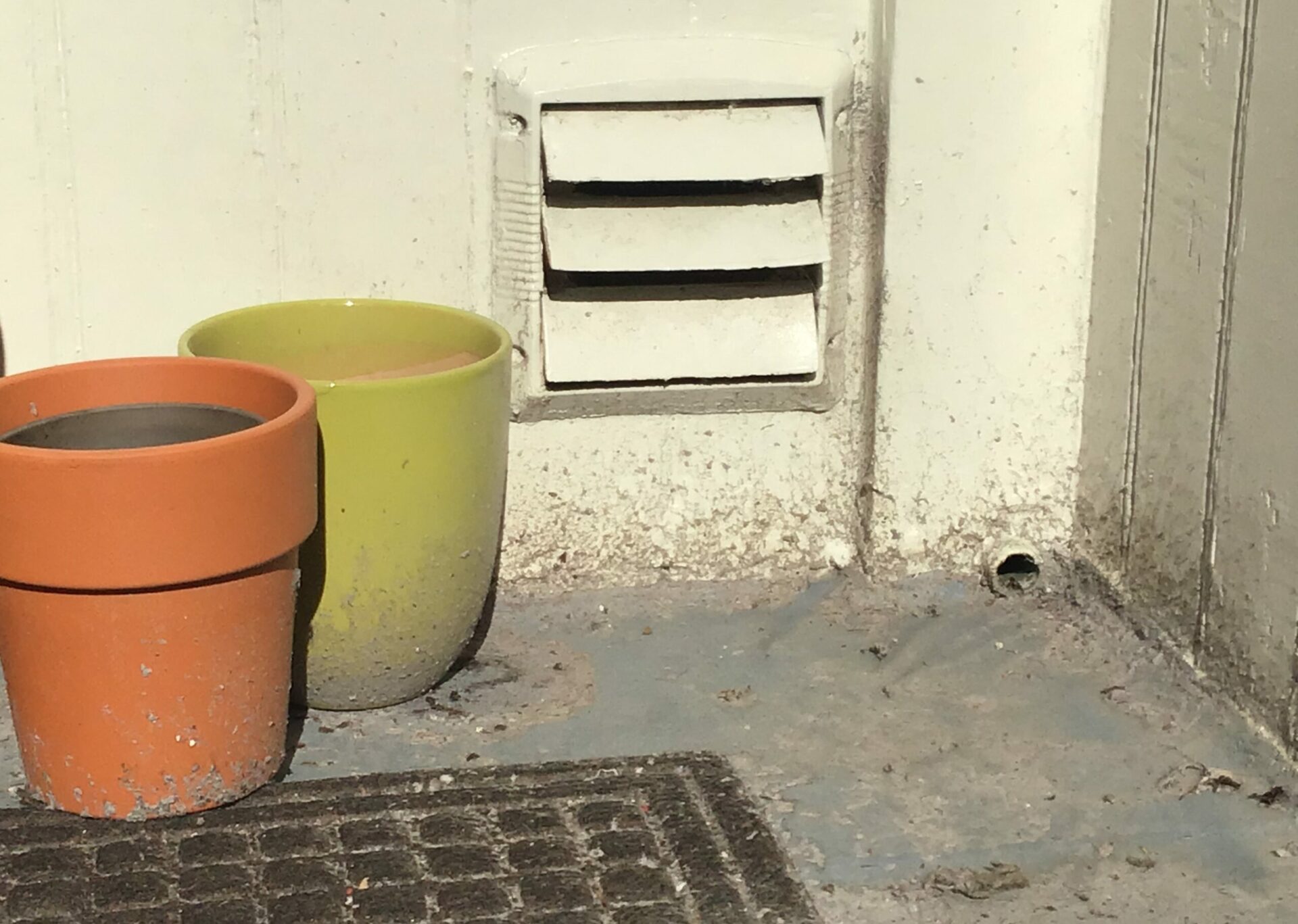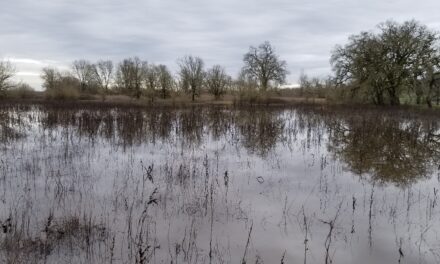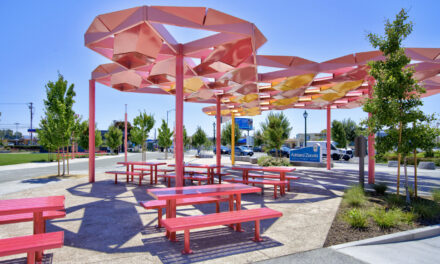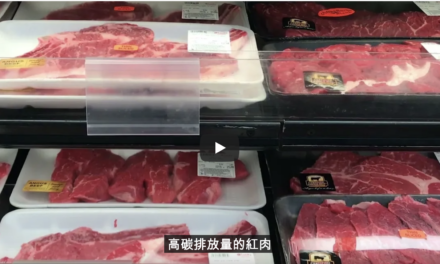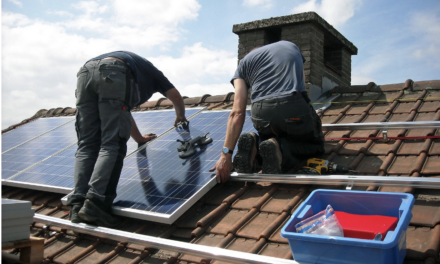Dryer Vents Blow Hot Air & Microplastics
New research confirms that air vents on tumble dryers – rather than washing machines – may be a leading source of microplastic fibers from clothing in the environment. The findings, presented in a new report by the San Francisco Estuary Institute, provide convincing reason to hang-dry clothes and to use energy-intensive dryers sparingly, if ever.
Microplastics have emerged in recent years as one of the most concerning forms of pollution, with the insidious little particles being found, among other places, in ocean-caught fish, beer, and even placentas of unborn babies.
Kelly Moran, an SFEI senior scientist and the lead author of the report, says emerging science on microplastic fiber sources also creates a significant regional divide between the people of the United States and Canada and those of the much of the rest of the world, including Europe and New Zealand.
“Tumble dryers aren’t widely used there,” she says, explaining that people in these regions tend to hang-dry their clothes or use gentler, less abrasive – and more energy-efficient – ventless dryer machines. Rather than spew out hot – and fiber-laden – air, ventless dryers recirculate heated air inside the system while draining out evaporated water.
“These geographic differences may explain why dryer vents are an under-studied source of microplastic pollution,” Moran and her colleagues suggest in their 137-page analysis. The authors also cite research suggesting that some dryers may cause 3.5 times the shedding of microplastic fibers that some washers do.
Microplastic fibers vented from clothes dryers may be especially problematic in the United States. That’s because Americans’ household wastewater is typically processed in treatment plants which remove most plastic particles, whereas dryer-released fibers exiting buildings can be washed into storm drains that flow directly to creeks. Many European communities, Moran says, have a different system entirely by which storm drains empty into wastewater treatment plants.
The SFEI’s report suggests regulatory action that could help mitigate microplastic pollution. Moran and her colleagues propose stricter standards on apparel fabric quality to reduce shedding. Filtration systems on dryer vents could also be improved to reduce microfiber emissions. They also encourage governments to ease restrictions on using outdoor clotheslines to dry clothes.
Other Recent Posts
Assistant Editor Job Announcement
Part time freelance job opening with Bay Area climate resilience magazine.
Training 18 New Community Leaders in a Resilience Hot Spot
A June 7 event minted 18 new community leaders now better-equipped to care for Suisun City and Fairfield through pollution, heat, smoke, and high water.
Mayor Pushes Suisun City To Do Better
Mayor Alma Hernandez has devoted herself to preparing her community for a warming world.
The Path to a Just Transition for Benicia’s Refinery Workers
As Valero prepares to shutter its Benicia oil refinery, 400 jobs hang in the balance. Can California ensure a just transition for fossil fuel workers?
Ecologist Finds Art in Restoring Levees
In Sacramento, an artist-ecologist brings California’s native species to life – through art, and through fish-friendly levee restoration.
New Metrics on Hybrid Gray-Green Levees
UC Santa Cruz research project investigates how horizontal “living levees” can cut flood risk.
Community Editor Job Announcement
Part time freelance job opening with Bay Area climate resilience magazine.
Being Bike-Friendly is Gateway to Climate Advocacy
Four Bay Area cyclists push for better city infrastructure.
Can Colgan Creek Do It All? Santa Rosa Reimagines Flood Control
A restoration project blends old-school flood control with modern green infrastructure. Is this how California can manage runoff from future megastorms?
San Francisco Youth Explore Flood Risk on Home Turf
At the Shoreline Leadership Academy, high school students learn about sea level rise through hands-on tours and community projects.
Moran says voluntary action at the individual level will also be helpful, primarily by avoiding dryer use when possible. “If you don’t have outdoor space, use an indoor folding rack – that’s what I do,” she says.
Though such solutions are seemingly obvious, reducing environmental pollution while improving energy efficiency and climate resilience, significant change will probably not come easily. “It’s difficult to change our lifestyles,” Moran says. “There’s a big gap between knowing what the solution is and doing it.”






